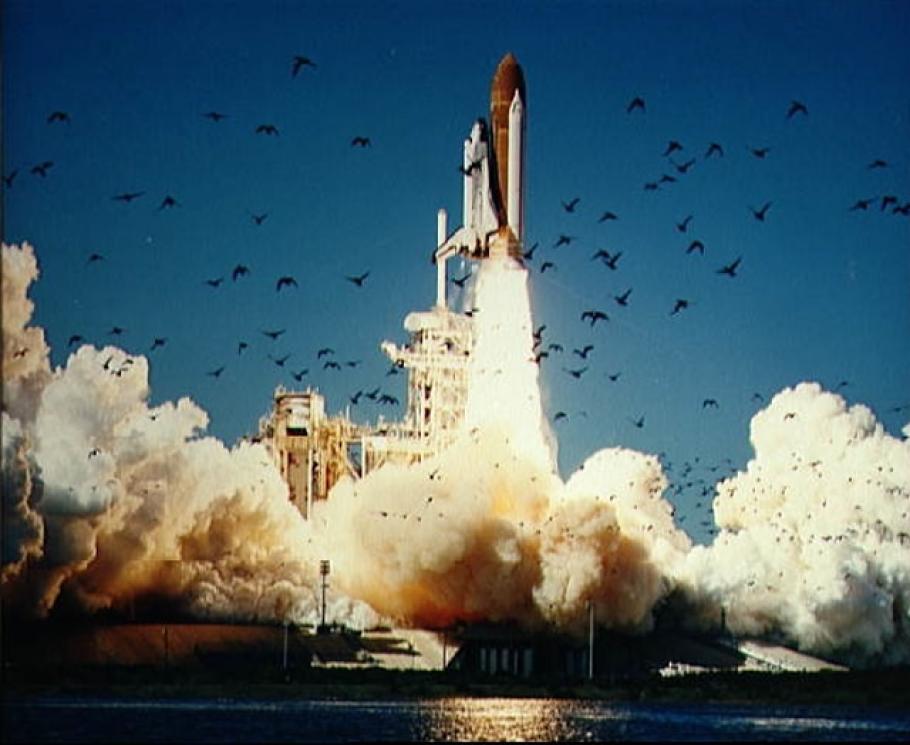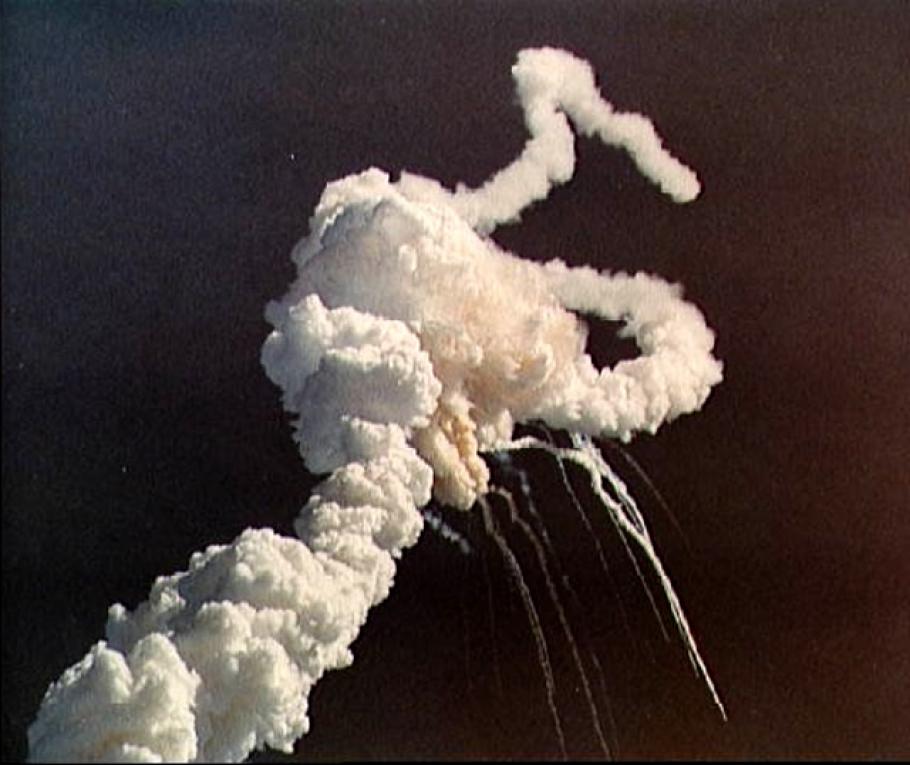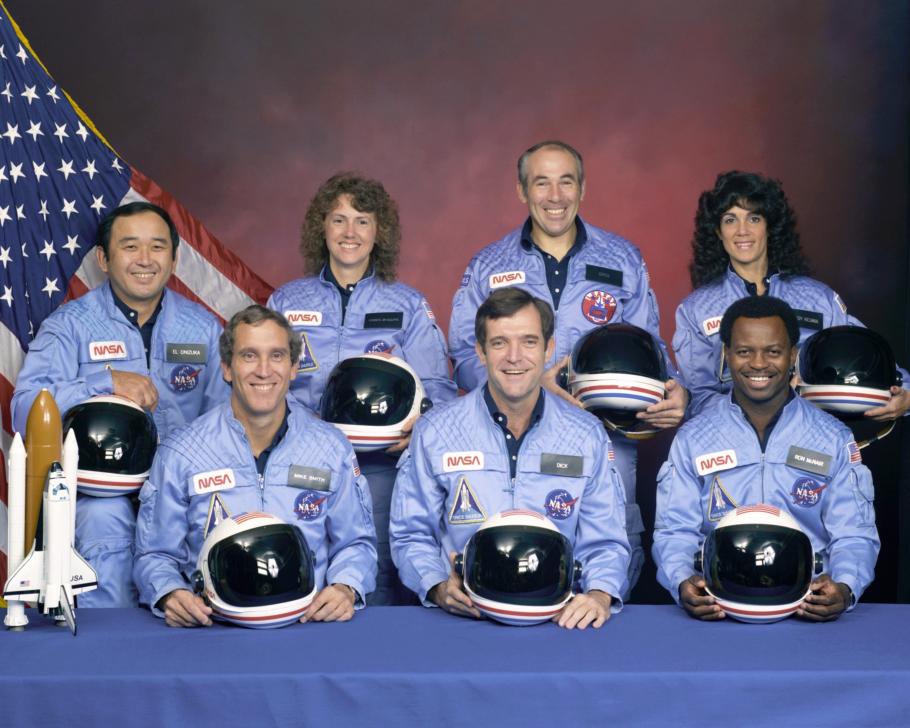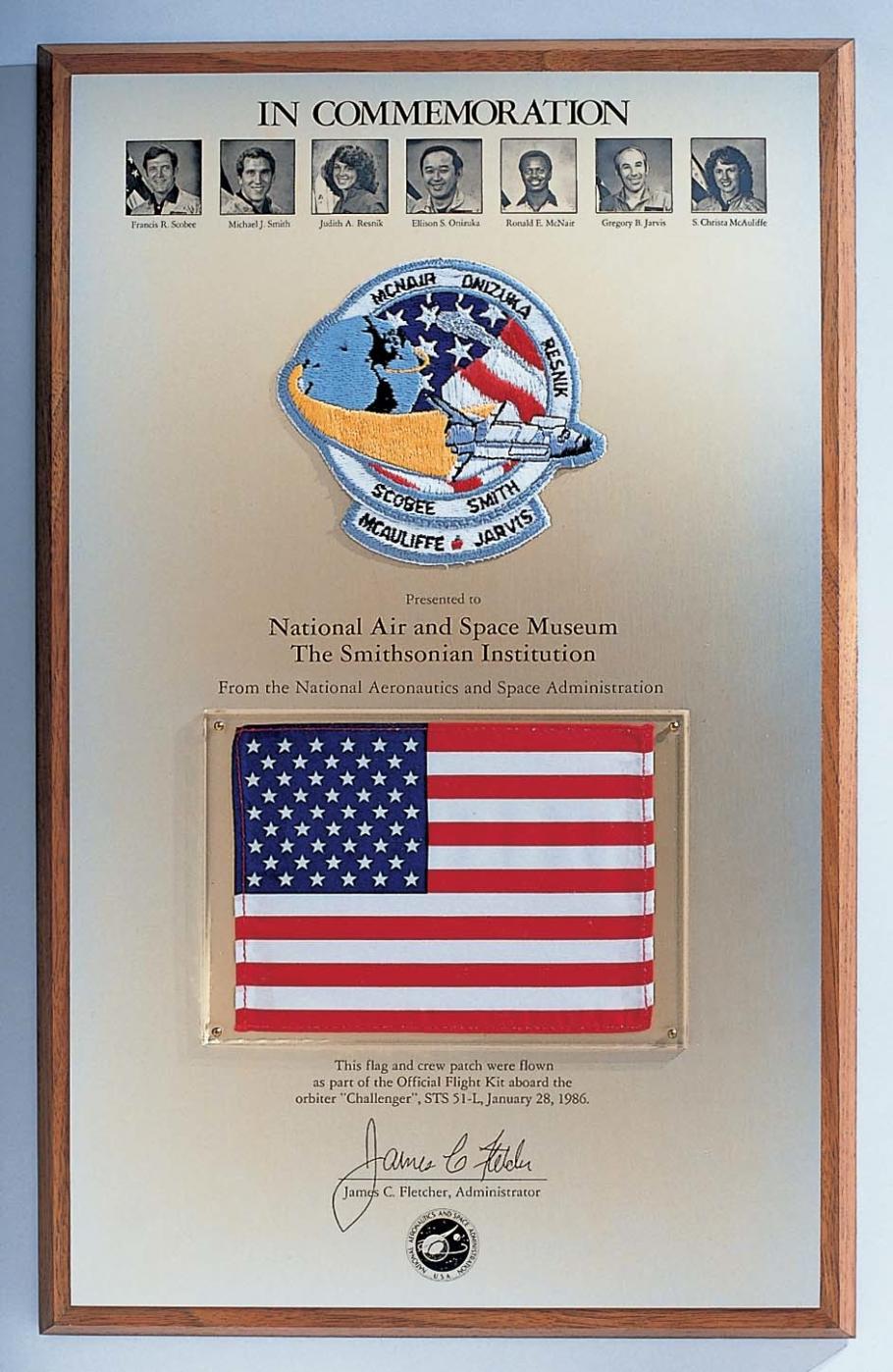1986 was supposed to be a banner year for the United States in space—12 shuttle missions scheduled, the most to date, including launch of the Hubble Space Telescope. The first five years of shuttle missions in Columbia, Challenger, Discovery, and Atlantis, had begun to establish the rhythm of routine spaceflight. The 25th mission, STS 51-L on Challenger, would be a major milestone.
Then the unthinkable happened. Before our eyes, in person and on television, Challenger and its crew disappeared in a fireball, with eerie vapor trails tainting the sky like bizarre fireworks. As pre-launch excitement turned to puzzlement and then to horror, we were shocked into realizing that spaceflight is not, and may never be, routine.
Seven special Americans lost their lives barely a minute into their ascent toward space the morning of January 28, 1986. Each had a story, a rich life, and dreams for the future—all curtailed too soon.
Vietnam veteran and Air Force test pilot Dick Scobee was commanding his first shuttle mission, having been pilot on the very challenging Solar Max repair mission (STS 41-C) in 1984. Mike Smith, Navy combat and test pilot who had flown primarily A-6 Intruders, was on his first mission as a shuttle pilot. Ellison Onizuka, an Air Force test pilot turned scientist-astronaut, had handled payload operations on the first Department of Defense mission (STS 51-C) in 1985. Judy Resnik, Ph.D. in electrical engineering, had proved her skills using the robotic arm to deploy satellites on a 1984 mission (STS 41-D) and was ready to do the same task on her second mission. Ron McNair, a Ph.D. physicist, had served as chief scientist on a 1984 mission (STS 41-B) and was eager to carry out more research in space. Christa McAuliffe, a high school social studies teacher selected to be America’s first teacher in space, was primed to broadcast in-orbit classes to classrooms around the country. Greg Jarvis, engineer and satellite designer for Hughes space division, was flying as a guest astronaut to conduct experiments related to liquid propulsion systems. This last Challenger crew was the most diverse crew to date, a group of talented, high-achieving individuals from various backgrounds and professions whose lives intersected for this particular seven-day journey. They seemed to reflect the multi-faceted face of America. They personified one of the promises of the shuttle era—that as spaceflight became more routine, more people would be able to fly in space safely, including people like Jarvis and McAuliffe, who were not part of the astronaut corps. After 24 missions, the media and the public had grown rather blasé about shuttle launches, but the teacher in space program had drawn inordinate attention to this mission. The media turned out in force, and educators around the country arranged for their students to gather around televisions in classrooms and auditoriums to watch the big event. It was to be, in today’s lingo, a “teachable moment” that would raise awareness of spaceflight and inspire young people to dream big dreams. The intended message: “This might be you. Someday you could do this, too.” That message went awry as Challenger broke apart and the astronauts plummeted to their death sealed inside the crew cabin. As the media repeatedly ran the footage of the doomed ascent, the event elevated into a national tragedy. The teachable moment brought different lessons about risk and grief, and then about decision-making. As mourner-in-chief, President Ronald Reagan sought to comfort the crew’s families, the NASA family, and the nation at large. His brief televised address that day was a proper elegy, eloquent and uplifting. He put this tragedy into the context of history and the future, linking it to familiar themes of the frontier and exploration. He called the crew heroes and pioneers, and assured us that their loss would not be the end of exploration. “The future doesn’t belong to the fainthearted; it belongs to the brave. The Challenger crew was pulling us into the future, and we’ll continue to follow them. … Nothing ends here; our hopes and our journeys continue.” Within days, the probable technical cause of the launch tragedy was identified. A rubber seal between two segments of one solid rocket booster had failed, and propellant gases and flame had burned through the side of the booster like a blowtorch. As the flame began to impinge on the lower external tank, the booster also began to twist on its attachments to the tank. These two events caused the tank to collapse, and the liquid oxygen and liquid hydrogen instantly mixed, igniting in a flash. What looked like an explosion was actually the result, not the cause, of the catastrophe. As the tank collapsed, the orbiter broke free and then broke apart from aerodynamic stresses. The crew cabin remained intact, as it was designed to do, and was later recovered from the ocean floor with the crew still strapped into their seats. It is a mistake to say that Challenger (the shuttle orbiter) exploded; it did not. It broke apart under stress. Months later, when the Presidential Commission on the Challenger Accident released its report, a more complex set of causes was identified. Most of them had to do with human error in understanding data, communicating, making decisions, and becoming complacent about safety. The commission determined that the Challenger tragedy had been “an accident waiting to happen” that was not averted because NASA had a “broken safety culture.” These findings prompted widespread changes in spaceflight operations to better ensure that safety issues received due attention, without shortcuts or poor assumptions. The Challenger tragedy triggered expressions of public mourning as people left flowers, flags, and other mementos at sites associated with the space program. Here at the Museum we found flowers and other small tributes near the large Space Shuttle model, creating an impromptu memorial there. (Another spontaneous memorial appeared here after the 2003 Columbia tragedy.) Since 1987 we have displayed a memorial plaque given by NASA to each of the crew families and to the Museum. It includes portraits of the last Challenger crew, a mission patch, and a small U.S. flag recovered from the vehicle debris.
Before long, schools and streets were named for the Challenger crew, individually or as a group, and then memorials appeared in their hometowns and elsewhere. The Challenger tragedy inspired installation of the Space Mirror memorial sculpture at the Kennedy Space Center. The Challenger families decided to establish a Challenger Learning Center for space science education in the crew’s honor, and today the popular franchise has spread to some 50 locations where students, teachers, and families participate in simulated space missions and learn more about spaceflight. The Challenger crew thus lives on in public memory. And, as President Reagan reassured us, the way to honor their lives was to continue the journey—as we have done in more than 100 shuttle flights since 1986. Perhaps only the engineers and technicians who worked closely with the orbiters actually mourned the loss of the vehicle, but for them losing Challenger was cause for grief. In an instant, one-fourth of the shuttle fleet—the orbiter they had tended for ten missions— was destroyed. In an instant, the flight rate that had accelerated from two to six to nine missions a year was stalled and the fleet was grounded for more than two years. It was a sobering event for the organization that took pride in preparing the shuttles for flight and an event still remembered with pain. What was learned from the Challenger tragedy? Some of the lessons were obvious in retrospect, and they were basic principles of rocket engineering, but they reminded us how easy it is to become comfortable, even careless, with responsibility. Spaceflight is inherently risky, and there are no shortcuts to the management of risk. Vigilance is the price of safety, and vigilance cannot be relaxed. Pay attention if something isn’t right; it may be telling you something important. Communicate clearly and be disciplined in decision-making. Spaceflight is still largely experimental. Routine spaceflight may be a wishful rather than a realizable goal.
Twenty-five years later, I still remember that morning at work in Huntsville, Alabama. Called from my desk to the conference room to watch the launch, standing around chatting with colleagues as the countdown continued, cheering the liftoff, and then being stunned by the appearance of those deviant exhaust trails. As the realization set in, needing silence and fresh air, I left the building to walk alone. Later that day, the mail delivery included a postcard from NASA indicating that my application packet for the Journalist-in-Space program had been received. I knew that flight would not happen anytime soon. It never did.





